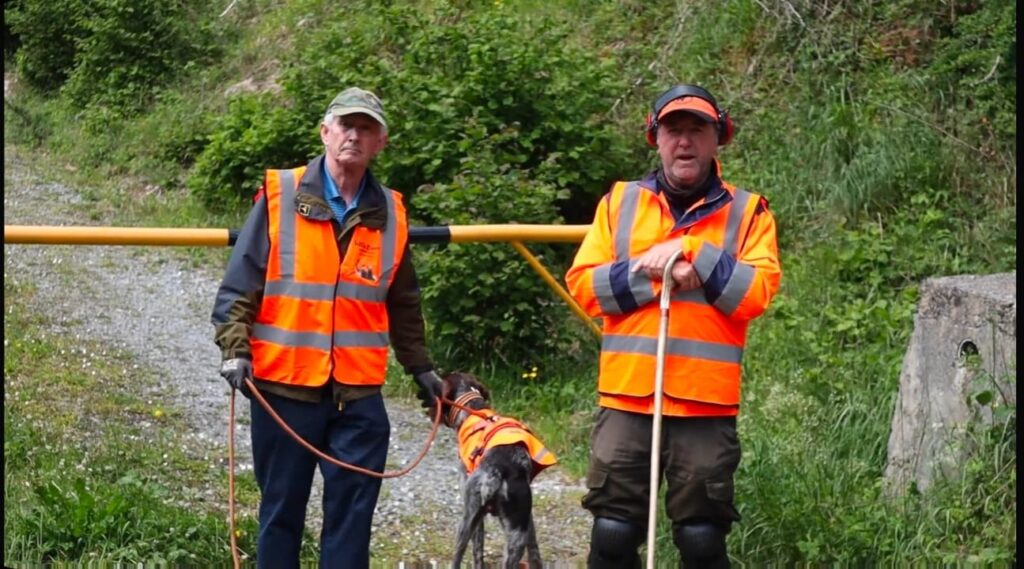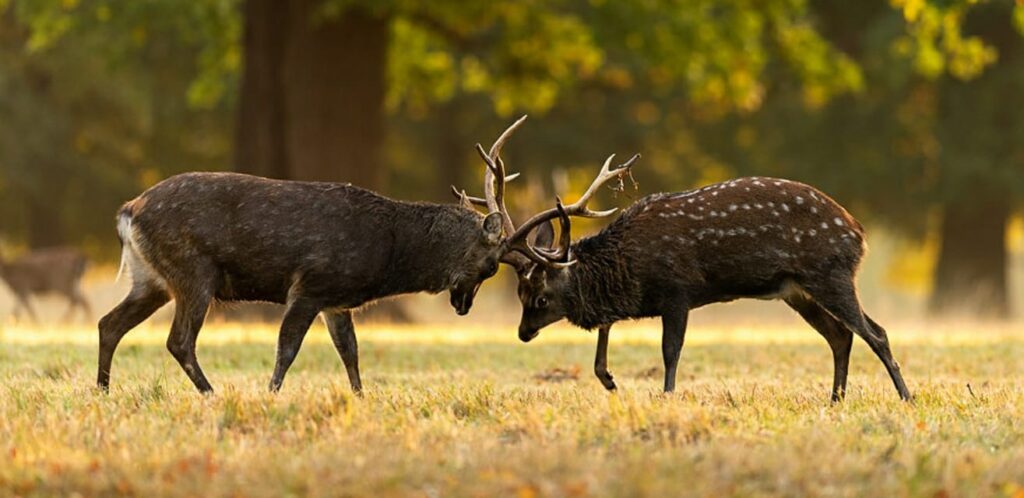DOG ATTACKS
DOGS CHASING AND ATTACKING DEER
Dog attacks on deer can result in severe injuries and no alternative but to euthanise the unfortunate animal. Reports have become all too frequent involving both wild deer and those enclosed in parks and other public places.
Very often the dog’s owner is shocked and surprised that their normally docile pet could behave in this way. They may even have been unaware of the real dangers that allowing their pet to chase deer can cause.
Even the most placid of domestic dogs can be triggered by the sight of a running deer or other animals into behaving outside their normal character. This is true no matter how well trained or reliable they are at other times.
Once in full pursuit, their owner is often ignored and the dog can run completely out of control as its hunting instincts take over. It may be lost from sight in a very short period of time as the pursuit continues.
Even if the target animal is not caught, the act of being chased can cause the deer detrimentally high levels of stress.

PREVENTING DOG ATTACKS ON DEER
Particular care should be taken to keep dogs under close control when walking them in places where deer, other vulnerable wildlife or farm stock are known to be present.
This is especially important between the months of May and August when the newly born of most deer species are likely to be left alone while their mother feeds (though muntjac fawns might be encountered at any time of year).
When their young are threatened, parent deer can overcome natural fears and be unusually defensive of them; their flailing forefeet are sharp and can cause serious injuries.
Another key time to be aware of is during the annual RUT , which for the larger deer species takes place mostly around October and November. Adrenaline-filled stags (and especially those in parks) are more likely to stand their ground, rather than flee and can defend themselves vigorously with both antlers and feet.
The key to preventing the indiscriminate chasing of deer and any resulting attack is to remain in full control of your dog at all times.
The WILD DEER ASSOCIATION of IRELAND strongly recommends that however well trained they are considered to be, dogs should be kept on leads in all places where deer or other sensitive species might be present.
In addition, when walking in the countryside please make sure you are aware of and follow the countryside code.

INJURIES AND RISKS
Injuries to animals caught and mauled by dogs tend to be to the rump and legs initially; once the target animal has been pulled down or immobilised, the dog may then concentrate on the neck, shoulders and belly.
The dog attack can be relentless. Even smaller dog breeds can cause extensive damage and if more than one dog is involved, the effects of an attack can be even more severe.
Sadly by this point, even if intervention is possible, the resulting injuries may be so traumatic that the deer is beyond veterinary help.
THE RISKS OF INTERVENTION
Attempting to intervene in a dog attack can be dangerous to bystanders, who may receive indiscriminate bites from any dog, irrespective of its size or how docile or friendly it might be under normal circumstances. In some cases, a frenzied dog might even turn on the rescuer.
